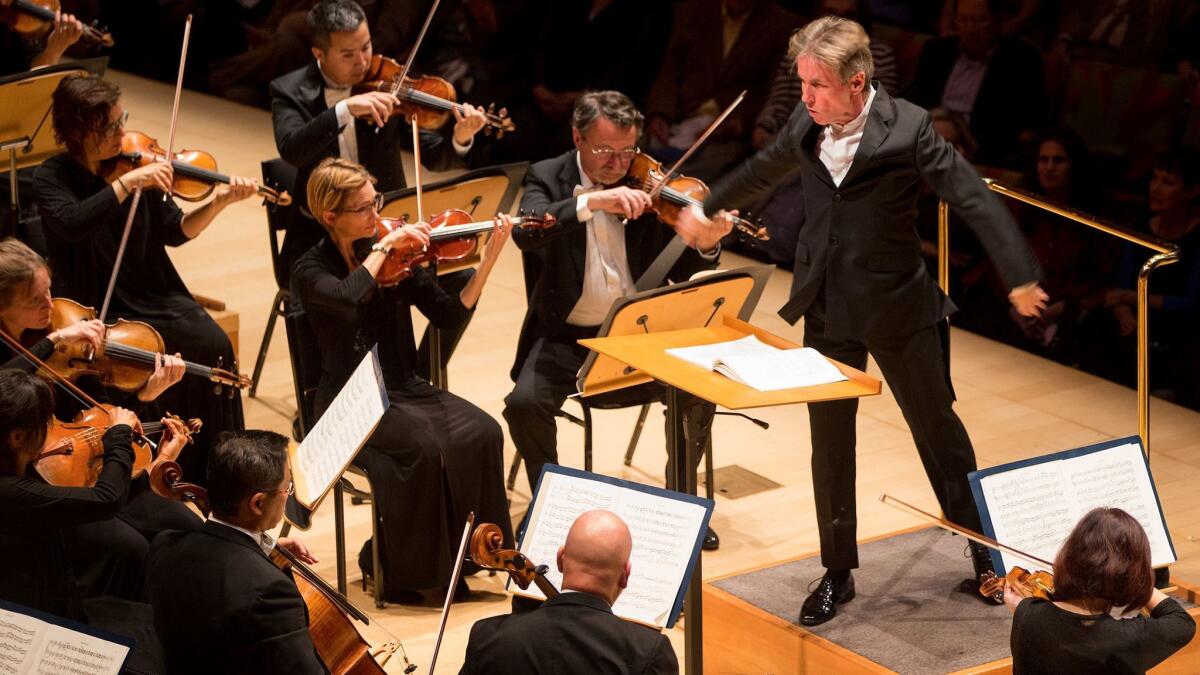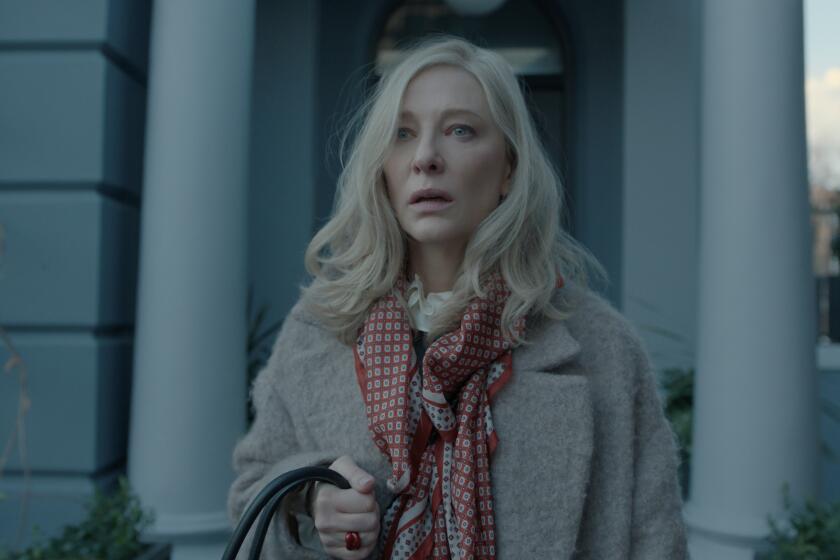Review: Making Sibelius modern with Esa-Pekka Salonen

Now that society has begun accepting gender as a matter of identity, might we not next adapt a similar flexibility to age identity? Let this week’s Los Angeles Philharmonic program of Sibelius’ last two symphonies cogently conducted by Esa-Pekka Salonen serve as Exhibit A.
The notion of “late style” has long held a special allure in music. Whether it is the concision and far-distance vision of late Beethoven, the heavenly absorption of Schubert, the willed acceptance of eternity in late Mahler, the stillness of late Cage or the flashes of serene paradise that overtook the once-hectic music of Elliott Carter, late implies an intimation of the meaning of life that only comes with the leaving of it.
But there is late, later and latest. On the occasion of Carter’s 80th birthday, I wrote, from the perspective of youth, an appreciation of his then “late” style. It turned out to be nonsense, since the composer lived to a musically fruitful 103, whereas Schubert died shortly before turning 32.
And then there is someone like Sibelius, who wrote his “farewell” Sixth and Seventh Symphonies in his late 50s before pretty much calling it quits as a composer at 61. There is no music of note from Sibelius’ last 31 years, although he was reputed to have sketched out an Eighth Symphony, never made public and likely destroyed by the composer.
What made the Walt Disney Concert Hall performance on Thursday particularly fascinating is that 58-year-old Salonen, who is probably the best-known Finnish musician since Sibelius, is in his prime as both a composer and conductor. Carter, it is worth remembering, wasn’t even halfway through his composing career at this age.
Salonen’s Cello Concerto, written for Yo-Yo Ma and premiered by the Chicago Symphony last month, has already been widely hailed in further performances in New York, London and Hamburg. (The L.A. Phil gets it in February.) His stirring performance last fall in Costa Mesa of Sibelius’ Fifth Symphony with the Philharmonia Orchestra felt as though the force of nature had been inserted in the score.
Back with the L.A. Phil for the first time this season and wearing a fashionably contemporary version of traditional tails, Salonen put new vitality into late Sibelius. This wasn’t so much a composer coming to an end of the line with his music as it was a composer not knowing how to continue in a striking new direction. This was made all the more striking by placing between the symphonies a rare performance of Sibelius’ charming six Humoresques for violin and orchestra, played by concertmaster Martin Chalifour and demonstrating just how scary Sibelius’ new direction must have seemed.
For further context, Salonen set the nationalist tone with the earlier heroic Sibelius, beginning the evening with an even more fervent than usual performance of “Finlandia,” all but Finland’s national anthem. Just the opposite in tone, the Humoresques, from 1917 and in two sets (Opp. 87 and 89), tend to be heard, when heard at all, as encore pieces. The third from Opus 89 has a jovial tune that is pure earworm material, particularly seductive in a passage where the soloist plays it in harmonics, as though whistling while skipping carefree through the woods. Others are dancelike or flirtatious, with aspects of Paganini and Fritz Kreisler bonbons.
Violinists like to lay the Romanticism on thick with these pieces. Chalifour, instead, brought his characteristic clean elegance, giving them a lean modern sheen, mirrored by Salonen’s lean accompaniments. That hint of old Finnish furniture with new touches demonstrated a suggestion of something that had already begun invading even Sibelius’ least troubled music.
The Sixth Symphony and the Seventh begin in an airy realm. In the Sixth, the strings hover in gorgeous irresolution. The Seventh seems at first more determined with a quiet timpani thump and low strings marching upward. But that doesn’t necessarily mean anyone knows where they’re going.
The Sixth, in four traditional movements, is the slightly more formal of the two and ends as enigmatically as it begins. The Seventh proceeds without a break and ends as ominously as it begins. Both symphonies, however, continually thwart symphonic logic, proceeding as though controlled by nature, ideas breaking off suddenly or recombining with the unpredictability of clouds on a windy day.
Salonen’s Sibelius is a composer’s Sibelius. He points out the qualities — such as the exquisite use of instrumental sections, where winds, strings and brass are their own individual sonic habitats — that he finds useful in his own works. He reveals a structure whereby the prosaic narrative becomes poetry and drama is not for catharsis but experience.
When he turned 50, Salonen had T-shirts printed that read “50 is the new 70.” I don’t know what that makes 58. But I do know that these are the most illuminating Sibelius performances for our time, with Salonen pulling out of his Finnish forbearer’s musical mists implications for future Nordic mists. Expect them to remain next week, as Salonen turns to Icelandic music in the L.A. Phil’s Reykjavik Festival.
♦ ♦ ♦ ♦ ♦ ♦ ♦ ♦ ♦ ♦
‘Los Angeles Philharmonic’
Where: Walt Disney Concert Hall, 111 S. Grand Ave., L.A.
When: 2 p.m. Saturday and Sunday
Tickets: $58-$188
Information: (323) 850-2000 or www.laphil.org
ALSO
Philip Glass, Pat Metheny, k.d. lang, Audra McDonald all turn out for a tribute to a Nonesuch guy
From ‘Breakfast at Tiffany’s’ to ‘Pink Panther’: The music of Henry Mancini, remembered
With some big opera names behind it, Young Artist Program aims even higher
More to Read
The biggest entertainment stories
Get our big stories about Hollywood, film, television, music, arts, culture and more right in your inbox as soon as they publish.
You may occasionally receive promotional content from the Los Angeles Times.











